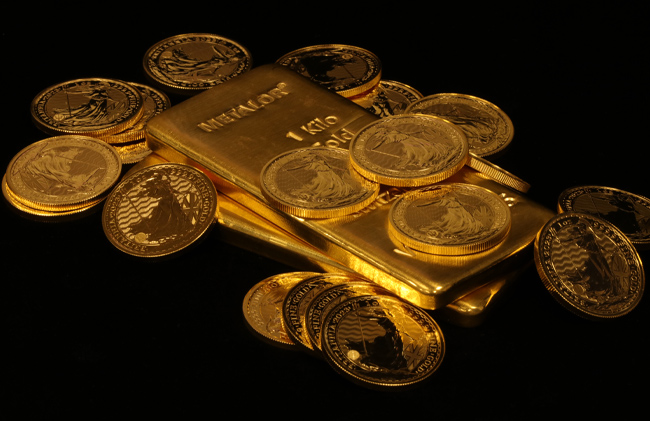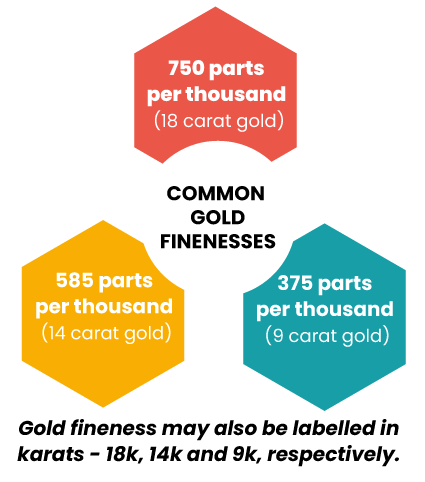What is Fineness?

Fineness refers to the purity of precious metals, such as gold, silver, platinum, and palladium. It measures the amount of the primary precious metal in proportion to other metals used in an alloy. Fineness determines the value and quality of metals used for coins, bullion, jewellery, and other applications.
Fineness Measurements
The unit of measurement for fineness is parts per thousand. Pure gold at 1000 parts per thousand is denoted as 24 carat or 100% gold. Other precious metals use the same system - pure silver is 999 parts per thousand, platinum is 999 parts per thousand, and palladium 999 parts per thousand in their purest forms.
Alloying and Fineness
Alloying precious metals with copper, silver, nickel, zinc and other base metals lowers their fineness by proportion, but results in more durable metals for functional use. Common gold finenesses are 750 parts per thousand (18 carat gold), 585 parts per thousand (14 carat gold), and 375 parts per thousand (9 carat gold). Gold fineness may also be labelled in karats - 18k, 14k and 9k, respectively.

Silver is commonly alloyed to 925 or 999 fineness levels. Platinum and palladium are alloyed to 950 and 999.5 parts per thousand fineness. Coins minted for circulation often have finenesses between 800-999 parts per thousand. Bullion bars for investment generally have 999 parts per thousand or higher fineness.
Common Fineness Levels
Fineness gives metals monetary value and must be accurately measured. Assay methods like cupellation, volumetric analysis and instrumental techniques are used to determine fineness. Hallmark stamps etched into precious metal items verify fineness. These include jewellery, bullion coins, decorative items, cutlery and religious objects. state a metal's fineness, manufacturer, year assayed and other details.
Fineness refers to the purity of precious metals, such as gold, silver, platinum, and palladium.
Higher fineness commands greater value due to higher purity and the expense of refining to high purity levels. 999 fine gold or silver bullion sells at a premium over 925 fine jewellery-grade silver. Fineness also indicates hardness and colour - 990 platinum is more scratch resistant than 900 platinum. 750 yellow gold has a richer colour than 585 gold alloy.

Precious metal fineness must align with intended use. 999 fine gold is too soft for rings that take daily wear, making 800-900 gold alloys more practical. White gold for jewellery contains nickel or palladium to produce its silver colour - not the yellow of pure gold. Sterling silver at 925 fineness resists tarnish better than pure 999 silver.
Importance of Accurate Fineness
Responsible buyers check fineness to ensure quality and validate precious metal content. Jewellers rely on correct fineness labelling for internal operations and customer information. Refiners, mints and traders require precise fineness testing for material transactions. Precious metals trading on financial markets uses fineness to value assets like gold kilo bars and silver contracts.
History of Fineness
From ancient times to today, stating precious metal fineness has instilled trust between producers, traders and consumers. Advances in assaying technology continue to allow for very precise fineness evaluation, now down to parts per million. The importance of accurately measuring fineness persists for giving precious metals their inherent worth.



















